Related Research Articles

Vera Florence Cooper Rubin was an American astronomer who pioneered work on galaxy rotation rates. She uncovered the discrepancy between the predicted and observed angular motion of galaxies by studying galactic rotation curves. Identifying the galaxy rotation problem, her work provided the first evidence for the existence of dark matter. These results were confirmed over subsequent decades.
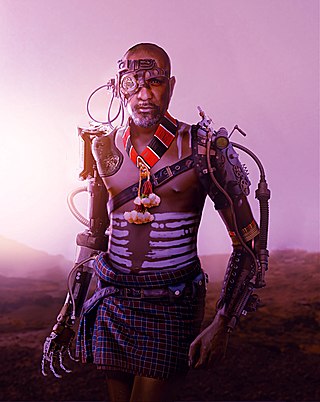
Afrofuturism is a cultural aesthetic, philosophy of science, and history that explores the intersection of the African diaspora culture with science and technology. It addresses themes and concerns of the African diaspora through technoculture and speculative fiction, encompassing a range of media and artists with a shared interest in envisioning black futures that stem from Afro-diasporic experiences. While Afrofuturism is most commonly associated with science fiction, it can also encompass other speculative genres such as fantasy, alternate history, and magic realism. The term was coined by Mark Dery, an American Cultural critic in 1993 and explored in the late 1990s through conversations led by Alondra Nelson.
Rian Hughes is a British graphic designer, illustrator, type designer, comics artist and novelist.

The Corcoran School of the Arts and Design is the professional art school of the George Washington University, in Washington, DC. Founded in 1878, the school is housed in the Corcoran Gallery of Art, the oldest private cultural institution in Washington, located on The Ellipse, facing the White House. The Corcoran School is part of GW's Columbian College of Arts and Sciences and was formerly an independent college, until 2014.
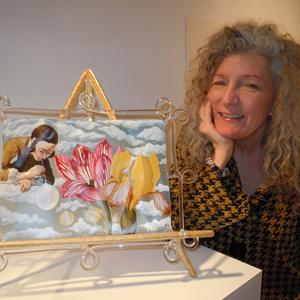
Ginny Ruffner is a pioneering American glass artist based in Seattle, Washington. She is known for her use of the lampworking technique and for her use of borosilicate glass in her painted glass sculptures.

Sam Gilliam was an American color field painter and lyrical abstractionist artist. Gilliam was associated with the Washington Color School, a group of Washington, D.C.-area artists that developed a form of abstract art from color field painting in the 1950s and 1960s. His works have also been described as belonging to abstract expressionism and lyrical abstraction. He worked on stretched, draped and wrapped canvas, and added sculptural 3D elements. He was recognized as the first artist to introduce the idea of a draped, painted canvas hanging without stretcher bars around 1965. This was a major contribution to the Color Field School and has had a lasting impact on the contemporary art canon. Arne Glimcher, Gilliam's art dealer at Pace Gallery, wrote following his death that "His experiments with color and surface are right up there with the achievements of Rothko and Pollock."
Carrie Mae Weems is an American artist working in text, fabric, audio, digital images and installation video, and is best known for her photography. She achieved prominence through her early 1990s photographic project The Kitchen Table Series. Her photographs, films and videos focus on serious issues facing African Americans today, including racism, sexism, politics and personal identity.

The American University Museum is located within the Katzen Arts Center at the American University in Washington, DC.

Lia Halloran is an American painter and photographer who lives and works in Los Angeles.

Leslie Hewitt is an American contemporary visual artist.
Susanne Kessler is a German – Italian painter, illustrator and installation artist.
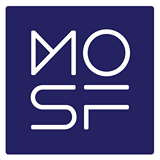
The Museum of Science Fiction (MOSF) is a 501c(3) nonprofit museum that has plans to be based in Washington, D.C. It was founded in the spring of 2013 by Greg Viggiano and a team of 22 volunteer professionals with a goal of becoming the world's first comprehensive science fiction museum. As of 2021, the museum does not yet have a permanent building or location.

Carol Brown Goldberg is an American artist working in a variety of media. While primarily a painter, often creating heavily detailed work as large as 10 feet x 10 feet, she is also known for sculpture, film, and drawing. Her work ranges from narrative genre paintings to multi-layered abstractions to realistic portraits to intricate gardens and jungles.

The Embassy of the United States of America in Dhaka is the diplomatic mission of the United States in Bangladesh. It is located in Baridhara. The embassy has 400 staff led by the US Ambassador to Bangladesh.
Suzanne Anker is an American visual artist and theorist. Considered a pioneer in Bio Art., she has been working on the relationship of art and the biological sciences for more than twenty five years. Her practice investigates the ways in which nature is being altered in the 21st century. Concerned with genetics, climate change, species extinction and toxic degradation, her work calls attention to the beauty of life and the "necessity for enlightened thinking about nature’s 'tangled bank'.” Anker frequently assembles with "pre-defined and found materials" botanical specimens, medical museum artifacts, laboratory apparatus, microscopic images and geological specimens.
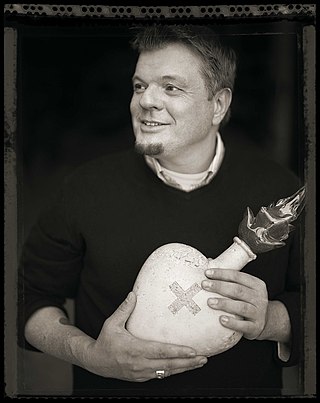
Tim Tate is an American artist and the co-founder of the Washington Glass School in the Greater Washington, DC capital area. The school was founded in 2001 and is now the second largest warm glass school in the United States. Tate was diagnosed as HIV positive in 1989 and was told that he had a year left to live. As a result, Tate decided to begin working with glass in order to leave a legacy behind. Over a decade ago, Tate began incorporating video and embedded electronics into his glass sculptures, thus becoming one of the first artists to migrate and integrate the relatively new form of video art into sculptural works. In 2019 he was selected to represent the United States at the sixth edition of the GLASSTRESS exhibition at the Venice Biennale.

Amir Zaki is an American artist based in Southern California. He is best known for "hybridized" photographs using digital and analog technologies that explore the rhetoric of authenticity, vocabulary of documentary, and acts of looking and constructing images. His work often focuses on the iconography and landscape of Southern California, simultaneously celebrating the banal and vernacular and subverting its related mythology. Zaki has exhibited nationally and internationally, and been featured in shows at the Whitney Museum of American Art, Orange County Museum of Art, California Museum of Photography, and San Jose Museum of Art. His work is held in the public collections of the Los Angeles County Museum of Art, Hammer Museum, New Museum, and Whitney Museum, among many, and appears in the anthologies Vitamin Ph (2006), Photography is Magic and Both Sides of Sunset: Photographing Los Angeles (2015).
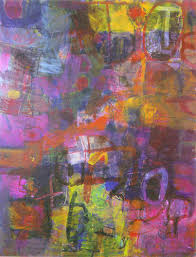
Don Kunz, is known for his work as a calligrapher, painter and teacher. Kunz served the Cooper Union for 33 years. He was devoted to the education of artists, most notably in the areas of painting and calligraphy; he is remembered for creating a dialogue between the two disciplines. His work was described as canvases filled with rich color and texture. Robert Rindler, former Dean of The School of Art at The Cooper Union for the Advancement of Science and Art describes Kunz's work as "a cacophony of color calligraphic gestures. It is the orchestra warming up in discord and evolving before your eyes into the most complex orchestral magic. They are eternally moving while frozen in time and place. All of Kunz's paintings require our participation in a dialogue."

Amy Karle is an American artist, bioartist and futurist. She creates work that looks forward to a future where technology can support and enhance the human condition. She was named in BBC's 100 women, as one of the 100 inspiring and influential women from around the world for 2019. Her work questions what it means to be human, with an emphasis on exploring the relationship between technology and humanity; particularly how technology and biotechnology impacts health, humanity, evolution and the future. She combines science and technology with art and is known for using live tissue in her works. Karle uses body based investigation and the actual science and technology as tools in the process of creating the artworks. Amy Karle's artworks include new media art, bioart, computational art, hybrid art, body art, durational performance art, installation art, and garments and wearable art. Karle is most noted for her artworks merging the body and technology, including Regenerative Reliquary, Internal Collection, Biofeedback artwork. She regularly exhibits her artworks in major museums around the world including in Ars Electronica, The Centre Pompidou, The Mori Art Museum, The Smithsonian Institution.
Katherine Sherwood is an American artist living and working in the San Francisco Bay Area, California who is known for paintings that explore disability, feminism, and healing, and for her teaching and disability rights activism at the Department of Art Practice at the University of California, Berkeley.
References
- 1 2 3 4 Fleerackers, Alice (January 28, 2019). "BITS – Duality by Jody Rasch". Polyfield Magazine. Retrieved August 30, 2022.
- 1 2 "Seeing Within". Interalia. April 2020.
- ↑ Jenkins, Mark (January 18, 2019). "In the galleries: Science expands nature art, on grand and minuscule scales" . Retrieved August 30, 2022.
- ↑ McCloskey, Danielle (December 2015). "Straight Talk with Jody Rasch". Sci Art in America: 16–20. ISSN 2372-2363.
- 1 2 Art in Embassies Exhibition: United States Embassy Dhaka. US Department of State, Washington, DC: Art in Embassies. June 2020. p. 16-17.
- ↑ "The World Unseen: Intersections of Art and Science". CDC.gov. July 2, 2019. Retrieved August 30, 2022.
- ↑ "Duality: Art + Science". AAAS.org. American Association for the Advancement of Science. Retrieved September 7, 2022.